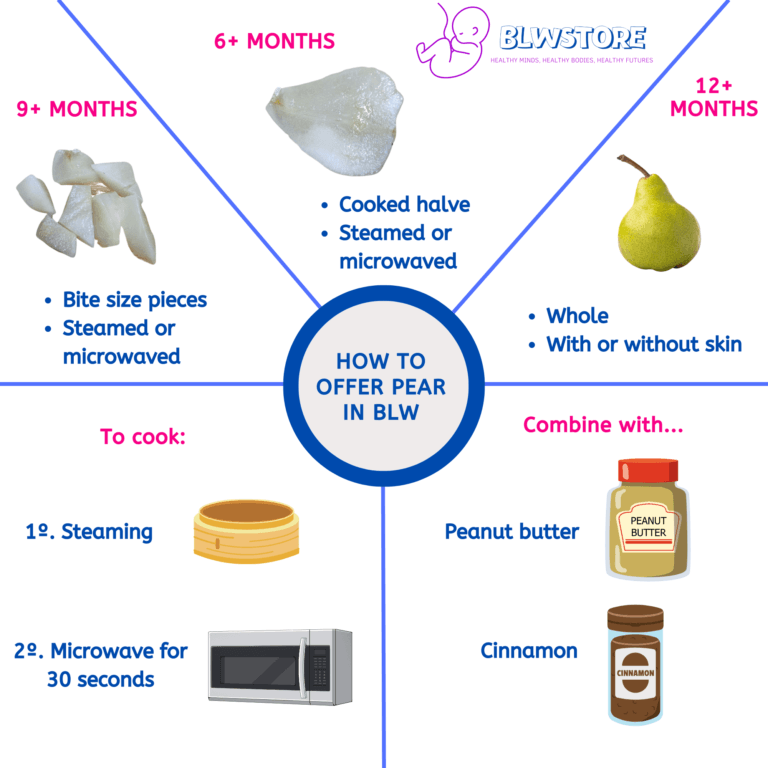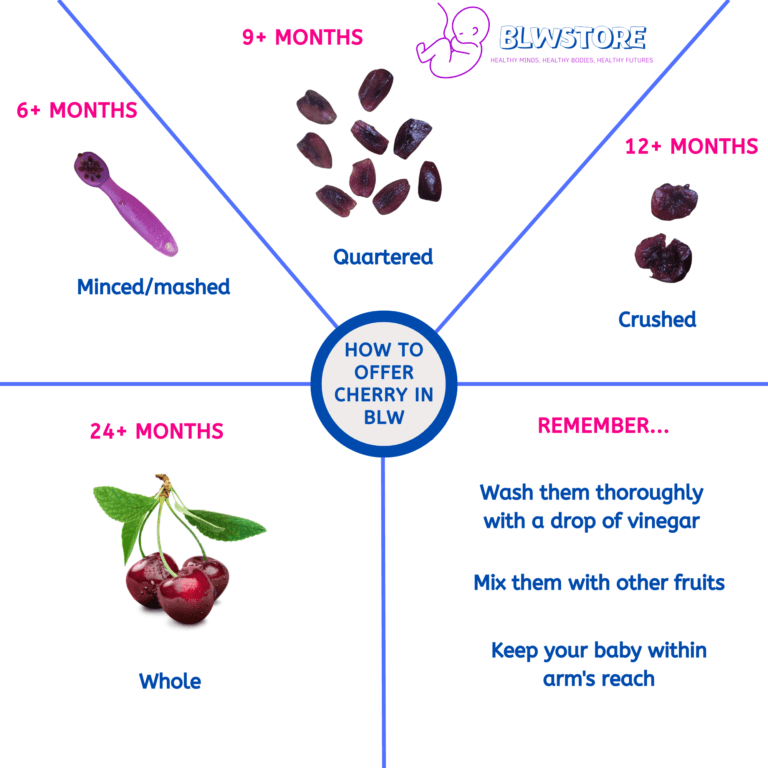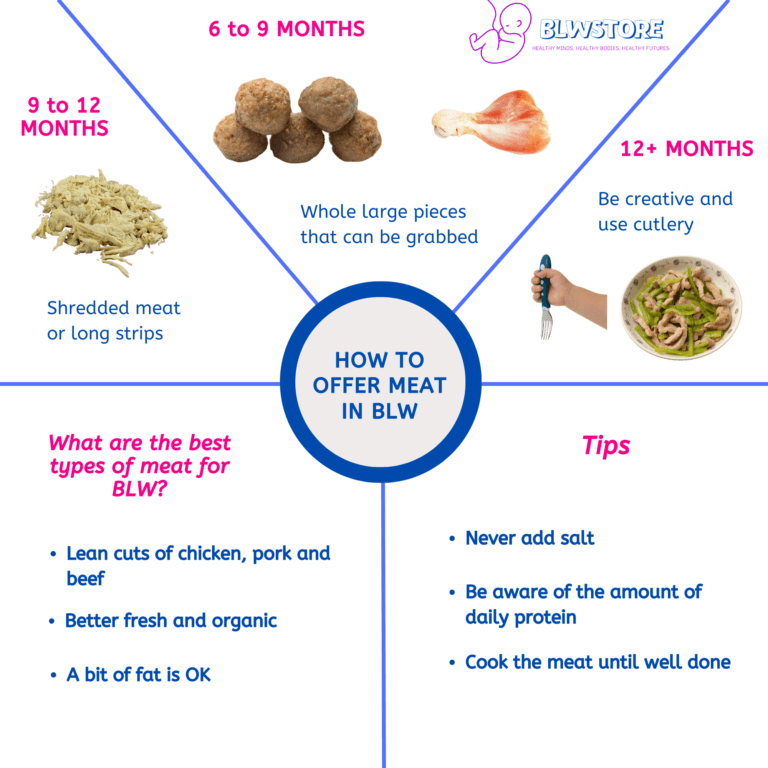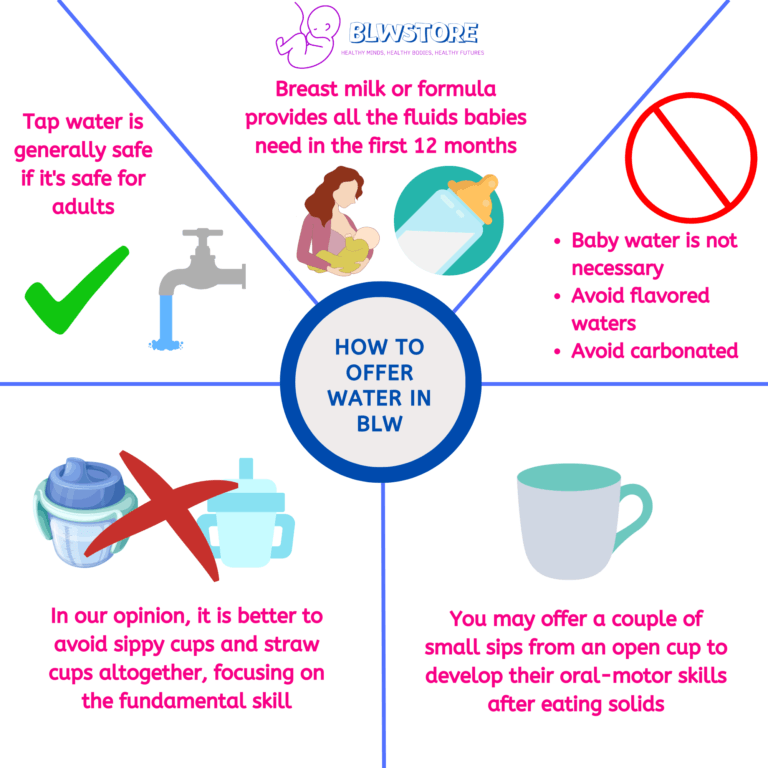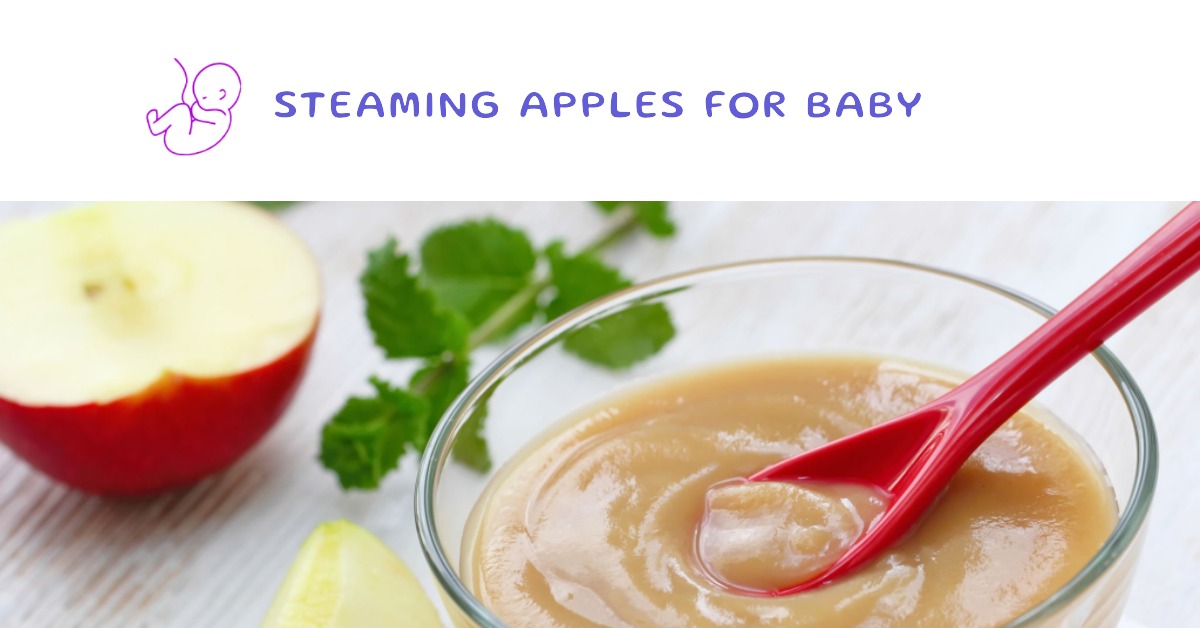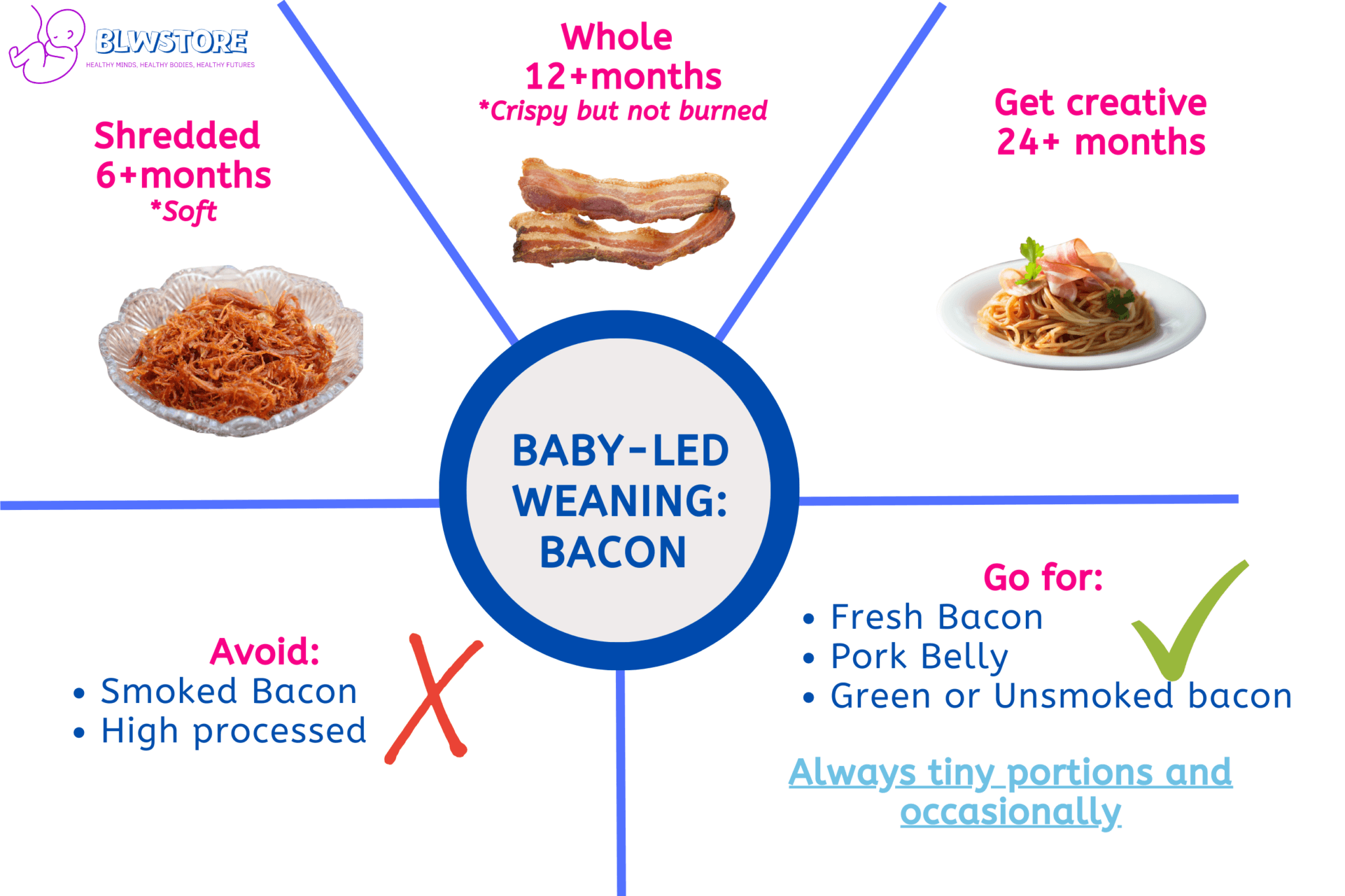
Your baby has started complementary feeding, and you doubt whether bacon is a suitable food for Baby-Led Weaning?
Look no further; in this article, we teach you everything you need to know about bacon: the types of bacon, the when and how, and answers to other common questions.
If you need a meal plan for BLW, check out our BLW Meal Plan Generator.
Key takeaways
- When introducing bacon to babies, it’s important to understand the differences between types of bacon and choose the healthiest option.
- Fresh and unsmoked bacon is the best option for babies over six months of age, as it is low in salt and has a milder flavor.
- Bacon should always be well-cooked before serving to babies and shredded into small pieces for younger babies to avoid choking risks.
- Turkey bacon can be a healthier alternative to pork bacon, but its salt content should still be considered.
- Bacon is not a common allergen, but it’s important to read labels and start with small quantities when introducing it to babies.
Can babies eat bacon?
A common question for parents when starting baby-led weaning is whether or not to offer certain foods, including bacon.
The question, however, should be: What kind of bacon can I give my baby?
Not all types of bacon are the same, and we should understand the differences first:
The No-No option: Smoked Bacon
Smoked bacon is considered processed food and has unnecessary chemicals and large amounts of salt.
We should not offer smoked bacon to our babies before two years of age since its high sodium content could be harmful to them.

The sometimes option: Unsmoked or green bacon
Unsmoked bacon, also known as green bacon, is bacon that has only been cured with salt and has not been smoked.
It has a milder, more neutral flavor that can be more suitable for babies and young children.
Unsmoked bacon is also lower in salt content, making it a safer option for babies during the baby-led weaning process.
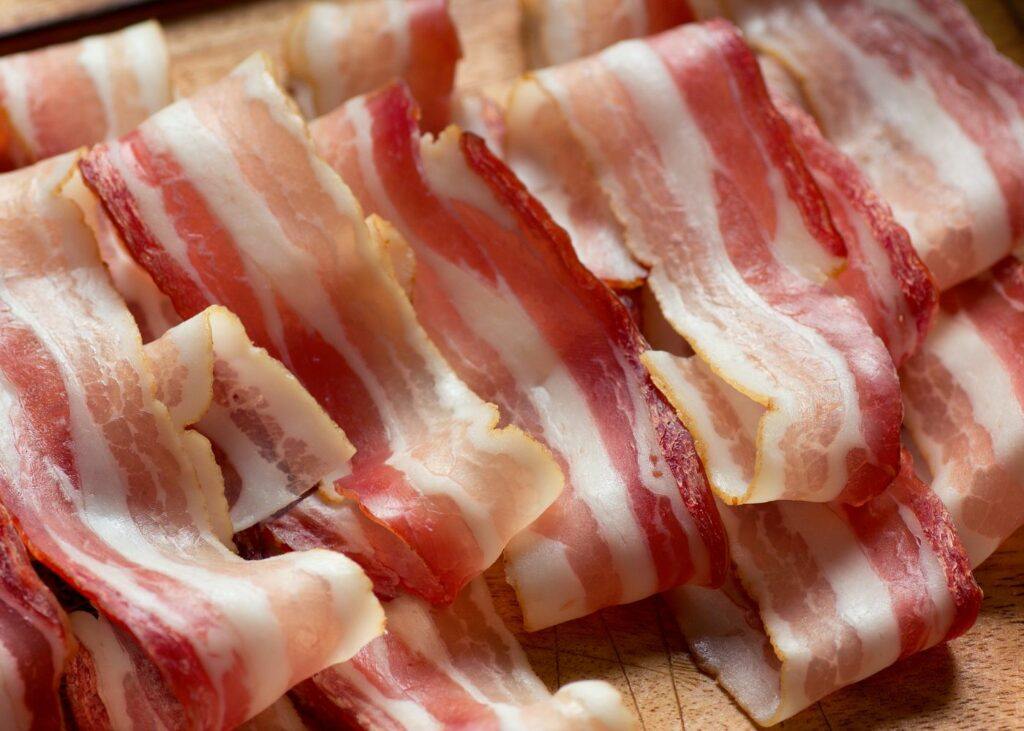
The best option: Fresh bacon/Pork Belly
Fresh bacon, commonly called pork belly, is a meat cut from a pig’s stomach.
It is usually sold as a raw, uncooked piece of meat and has not been cooked, cured, or treated in any way.
This is the perfect option to introduce this cut of meat to our baby since it is in its natural state.
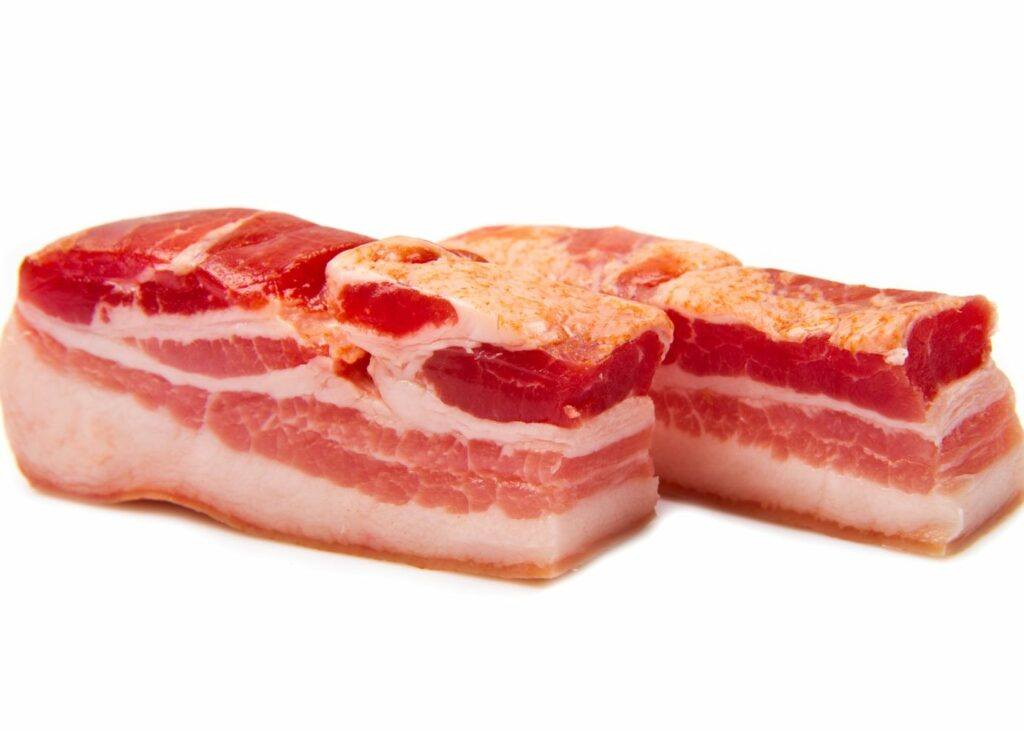
Can babies eat bacon according to NHS?
According to the National Health Service (NHS) in the UK, it’s safe for babies over 6 months old to have small amounts of well-cooked bacon as part of a balanced diet.
The NHS recommends avoiding giving babies processed meats, such as ham or sausages, as they can be high in salt and preservatives, which can be harmful to a baby’s health.
Just remember what we have already said, it is always better to offer fresh or unsmoked bacon.
When can babies eat bacon?
Depending on the type of bacon you want to introduce, the “when” will change.
- 6-12 Months: Small quantities of fresh bacon or pork belly. Always well cooked.
12-18 Months: You can start offering unsmoked bacon in small portions
and occasionally.- 24+ Months: You may offer smoked bacon sometimes and in small quantities.
Having said this, always aim to offer fresh bacon, since it is the healthiest option.
Can Babies have turkey bacon?
Yes, babies can eat turkey bacon, as long as you follow the same rules as pork bacon.
Here’s a table with the main differences between turkey and pork bacon.
| Turkey Bacon | Ordinary Bacon |
|---|---|
| Made from turkey meat | Made from pork meat |
| Typically lower in fat and calories | Higher in fat and calories |
| Usually lower in salt content | Usually higher in salt content |
| Higher in protein | Moderate protein content |
| Lower in saturated fat | Higher in saturated fat |
| Generally considered a healthier alternative | Can still be enjoyed in moderation |
Is bacon a common allergen?
No. Although there have been reports of reactions to bacon, it is not a frequent food allergy.
When purchasing bacon, always read the label. In rare circumstances, soy or other common allergies may have been added.
Start by serving a modest quantity initially, just as you would when introducing any new dish.
Increase the amount gradually over subsequent meals if there is no negative reaction.
How to cut and offer bacon with baby-led weaning
It’s crucial to consider the various stages of a baby’s growth and ability when introducing bacon as part of baby-led weaning. At various ages, you can cut up and give your infant bacon as follows:
6 to 12 months
Using fresh pork belly or unsmoked bacon and shredding it into small pieces is advised at this stage.
This makes it simpler for the baby to grip and handle the food, which facilitates eating.
It also assists in reducing choking risks.
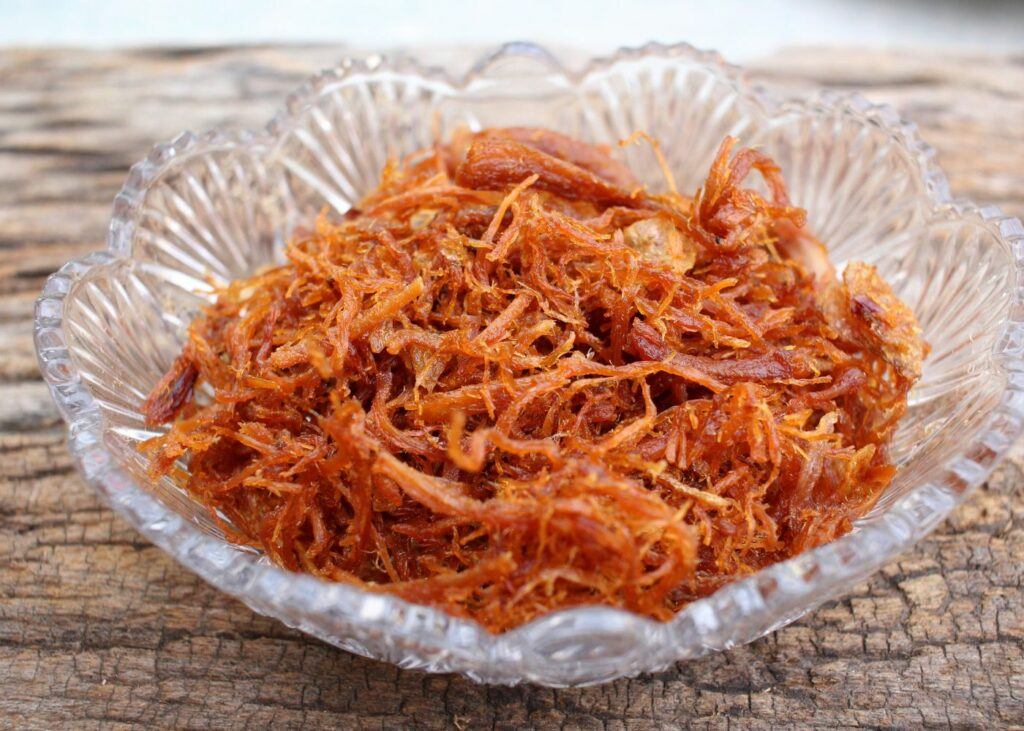
12 to 24 months
As your baby grows and develops their chewing and swallowing skills, you can offer whole strips of bacon that have been cooked until crispy, but not burned.
This can be a fun and interactive way for your baby to practice their chewing and biting skills.
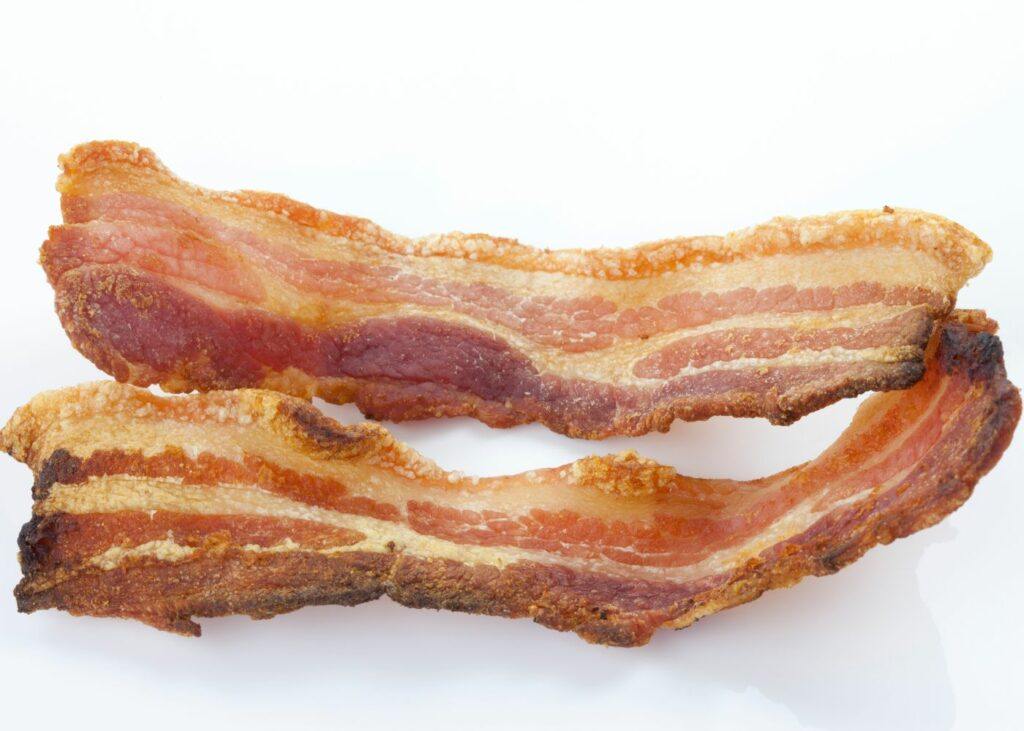
24 months and beyond
At this age, your baby has likely honed their eating skills and can enjoy bacon in the same way that you would.
You can get creative with serving it, such as offering it as a topping for a salad, wrapped around a hot dog, or as a garnish for a pasta dish.
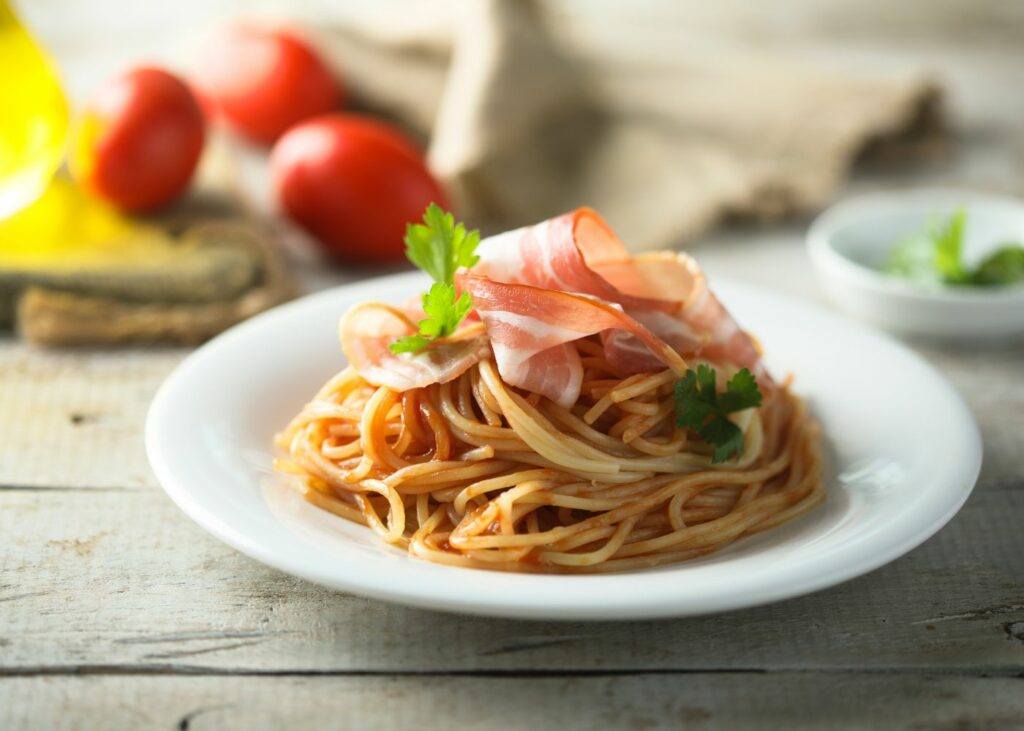
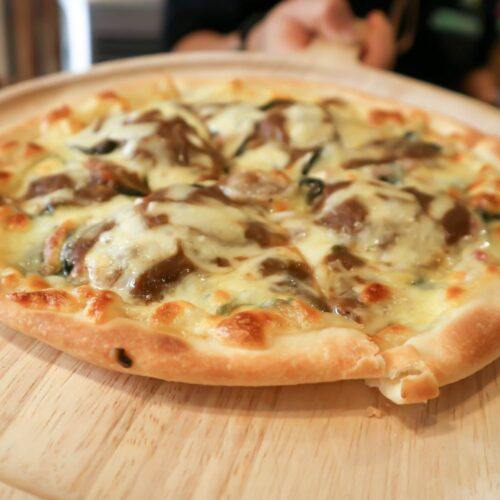
Pork Belly and Mushroom Spelt Flour Pizza
Ingredients
- 1 lb pork belly cut into small strips
- 2 cups spelt flour
- 1 tsp dried oregano
- 1 tsp dried basil
- 1 tbsp extra-virgin olive oil
- 1 cup warm water
- 1 cup tomato sauce no added salt or sugar
- 1 cup sliced portobello mushrooms
- 8 ounces fresh mozzarella cheese sliced
Instructions
- Preheat the oven to 450°F (230°C)
- In a large mixing bowl, combine the spelt flour, oregano, basil, and olive oil. Slowly add in the warm water and mix until a smooth dough forms.
- Turn the dough out onto a floured surface and knead for 5-10 minutes until it becomes elastic
- Roll out the dough into a circle or rectangle, depending on your preference, and place it onto a baking sheet.
- Spread the tomato sauce onto the dough, leaving about 1 inch around the edges
- Arrange the pork belly and sliced mushrooms on top of the tomato sauce
- Top with slices of fresh mozzarella cheese
- Bake in the preheated oven for 15-20 minutes, or until the crust is golden brown and the cheese is melted and bubbly
- Remove from the oven and let cool for a few minutes before slicing and serving
Notes
- Spelt flour can be substituted with wheat flour or a gluten-free flour blend if preferred.
- The pizza dough can be prepared in advance and stored in the refrigerator for up to 2 days.
- For a crispy crust, place the baking sheet on a preheated pizza stone or baking steel before adding the pizza dough.
- You can also buy a premade pizza base, just make sure to check the ingredients to avoid extra salt or sugar.
Conclusion
In conclusion, incorporating bacon into your baby’s diet during the exciting baby-led weaning stage can raise many questions.
However, with the correct information and preparation, bacon can be a tasty and safe addition to your baby’s diet. Fresh and unsmoked bacon are the best options for babies over six months of age and should be cooked and cooled before serving.
Turkey bacon can be an excellent alternative to pork bacon, but it’s essential to consider its salt content.
As your baby grows and develops, how you serve and prepare bacon can also change, providing various options to keep mealtimes exciting.
We’re Maria and Alberto, a married couple and educators who are nutrition enthusiasts. Even before we had kids, we were already crazy about nutrition.
We’d read scientific articles, watch videos from nutritionists, and spend hours listening to nutrition podcasts.
Today, we continue doing this, but in a different way, as we’ve learned to sift through the noise and trends. Nutrition, like any other field of knowledge, the more you read and learn, the more you develop a comprehensive understanding of reality, and that’s what has happened to us.
Before having our first child, we focused on learning everything we could about child nutrition, using the same techniques we had already employed, backed by our extensive knowledge in nutrition.
Our mission is to help other parents with their children’s nutrition, to help them become the best versions of themselves.
If we are what we eat and drink, which is absolutely true, let’s do it right!


